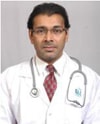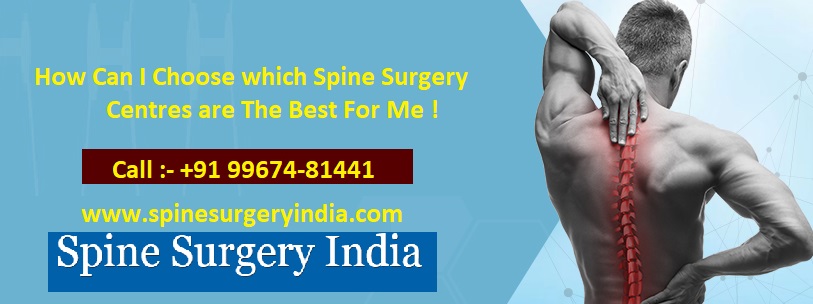Back Pain
Back Pain: Get acquainted with Back Pain that appears as a pain felt in the back that begins from the muscles, nerves, bones, joints or other structures in the spine.Know more..
Neck Pain
Neck Pain: Neck Pain is a medical condition that can involve any of tissues in the neck. Examples of its condition that cause to neck pain are degenerative disc disease, neck strain and neck injury.Know more..
Degenerative Disc Disease
Degenerative Disc Disease: Known as DDD, Degenerative Disc Disease is a condition that can be painful and can poorly affect the quality of one’s life. Also this can cause to severe chronic pain if left untreated.Know more..
Herniated Disc
Herniated Disc: Get to Herniated disc one of the spinal conditions that occurs when all or part of a disc is forced by a weakened part of the disk. Also this may place pressure on close nerves or the spinal cord.Know more..
Kyphosis
Kyphosis: Also known as a round back or hunchback, Kyphosis is a medical condition in which the spine in upper back has an excessive curvature. Kyphosis occurs when the upper back is larger than normal.Know more..
Sciatica
Sciatica: Get known with Sciatica is pain in lower extremity resulting from irritation of sciatic nerve. Pain of sciatica (Sciatic Nerve Pain) is felt from low back to behind thigh and is radiates down below knee.Know more..
Scoliosis
Scoliosis: Scoliosis appears as a medical condition in which a person’s spine gets curved back and forth. Also this is typically organized as either a congenital, idiopathic, or secondary to a primary condition.Know more..
Spinal Stenosis
Spinal Stenosis: Spinal stenosis is an abnormal narrowing of the spinal canal that may occur in any of the regions of the spine. Its symptoms include pain, numbness, paraesthesia, and loss of motor control.Know more..
Spondylolisthesis
Spondylolisthesis: Keep in mind that Spondylolisthesis is known as the anterior or posterior displacement of a vertebra or the vertebral column in relation to the vertebrae below.Know more..
Spondylosis
Spondylosis: Appeared as one of spinal conditions, Spondylosis is referred as to degenerative osteoarthritis of the joints between the center of the spinal vertebrae and/or neural foramina.Know more..
Whiplash
Whiplash: Whiplash is a common injury that happens to a person’s neck following a sudden acceleration-deceleration force that causes rapid forward and backward movement of head and neck.
Spinal Tumors
Spinal Tumors: Spinal tumors can be benign or malignant. Spinal tumors may be referred by the area of the spine in which they occur. These basic areas are cervical, thoracic, lumbar and sacrum.
Children’s Spine Surgery
Children’s Spine Surgery: Children’s spine surgery that covers to every pediatric spinal condition to get well-treated is meant fully to cure for the children’ health, if willed for best children’s spine surgery.
Spina Bifidia
Spina Bifidia: Spina bifida is a progressive congenital disorder caused by partial closing of embryonic neural tube. This can be surgically closed after birth, but it does not reinstate normal function to the affected part of spinal cord.
Bone Spurs
Bone Spurs: Bone Spurs are as the bony growth formed on normal bone. Bone spurs are caused by local inflammation, such as from degenerative arthritis or tendonitis. Also these could be related with pain, numbness, tenderness, and weakness if they are bothering nearby tissues.
Anterior Lumbar Interbody Fusion (ALIF)
Anterior Lumbar Interbody Fusion (ALIF): With its acronym- ALIF, Anterior Lumbar Interbody Fusion is used to treat problems such as disc degeneration, spine instability, and deformities in the curve of spine. In the procedure, the surgeon works on spine from front and removes a spinal disc in the lower spine.
Disc Bulge
Disc Bulge: Disc Bulge is known as a common spine injury continued to your spine’s intervertebral disc. It can occur in your lumbar spine, thoracic spine or your cervical spine. know more..
Spinal Cord Injury
Spinal Cord Injury: Spinal cord injury refers to any injury to spinal cord caused by trauma. Also this has many causes, but is linked with major trauma from motor vehicle accidents, falls, and sports injuries.know more..
Ankylosing Spondylitis
Ankylosing Spondylitis: Ankylosing spondylitis seems as a chronic inflammatory disease of the axial skeleton with uneven involvement of peripheral joints and non-articular structures.
Cervical Pain
Cervical Pain: Cervical pain may happen due to muscular tightness in both the neck and upper back, and pinching of the nerves coming from the cervical vertebrae. know more..
Acute Back Pain
Acute Back Pain: Acute back pain refers to pain ranging from an ache to shooting pains or spasms. Also experienced as aching, burning, sharp or dull, this may begin following a tiring activity or jarring trauma.
Low Back Pain
Low Back Pain: Low back pain is a common disorder involving the muscles and bones of the back. Low back pain may be classified by duration as acute, sub-chronic, or chronic.know more..
Lumbar Canal Stenosis
Lumbar Canal Stenosis: Lumbar spinal stenosis is a medical condition in which the spinal canal narrows the spinal cord and nerves at level of lumbar vertebra. This results in low back pain or irregular sensations in the legs, thighs, feet, or loss of bladder.
Lumbar Disc Prolapse
Lumbar Canal Stenosis: Lumbar spinal stenosis is a medical condition in which the spinal canal narrows the spinal cord and nerves at level of lumbar vertebra. This results in low back pain or irregular sensations in the legs, thighs, feet, or loss of bladder.
Lumbar Disc Prolapse
Lumbar Disc Prolapse: Lumbar disc prolapse is a spinal condition that can cause lower back pain, lack of feeling, and muscle weakness in the lower body. The condition is referred to as a ruptured disc, and is common in people of 35-45.
Lumbar Discectomy Minimally Invasive Spine Surgery
Lumbar Discectomy Minimally Invasive Spine Surgery: Known as LDMI, Lumbar Discectomy Minimally Invasive Spine Surgery is performed through a tubular device and is designed to relieve pain caused by herniated discs pressing on nerve roots.
Lumbar Radiculopathy
Lumbar Radiculopathy: Lumbar radiculopathy refers to disease that involves the lumbar spinal nerve root. This is typically caused by a compression of the spinal nerve root. Also this causes pain in the leg rather than in the lumbar spine, which gets called “refered pain.”
Metastasis to Spine
Metastasis to Spine: Metastasis to spine is common in patients with cancer. The spine falls as the third most common site for cancer cells to metastasize, following lung and liver.
Myelopathy
Myelopathy: Myelopathy refers to pathology of the spinal cord. When due to trauma, it is known as spinal cord injury. When got inflammatory, it is happened as myelitis.
Osteoporosis
Osteoporosis: Osteoporosis is happened as a progressive bone disease that is characterized by a decrease in bone mass and density which could lead to an enlarged risk of fracture.
Slipped Disc
Slipped Disc: Slipped disc, known as a prolapsed or herniated disc, is a medical condition affecting the spine in which a tear in outer, fibrous ring of an intervertebral disc lets the soft, central portion to bulge beyond the damaged outer rings.know more..
Scheuermann’s Disease of the Thoracic and Lumbar Spine
Scheuermann’s Disease of the Thoracic and Lumbar Spine: Know Scheuermann’s Disease of the Thoracic and Lumbar Spine a condition in which the normal roundback in the upper spine gets increased. Most people suffering with Scheuermann’s disease will have an increased roundback, but no pain.
Spinal Injuries
Spinal Injuries: Spinal injuries refer to the injuries to the spinal cord that is caused by trauma instead of disease. Also Spinal cord injuries are described at different levels of “incomplete”, which can vary from no effect on the patient to a “complete” injury that signifies a total loss of function.
Tuberculosis of Spine
Tuberculosis of Spine: Spinal Tuberculosis occurs as a very dangerous type of skeletal TB as it can be linked with neurologic deficit because of compression of nearby neural structures and noteworthy spinal deformity.
Cervical Spondylotic Myelopathy
Cervical Spondylotic Myelopathy: Cervical spondylotic myelopathy presents itself as the most common cause of spinal cord dysfunction in the older persons. The aging process results in degenerative changes in the cervical spine that can cause compression of the spinal cord, in advanced stages.




















